Fix 0x800f0831 Windows 10 Update Error
Many users have been reporting Windows 10 errors 0x800f0831 while using Windows Update Services. When you encounter this error, you are unable to install any cumulative updates, security updates, or other important updates on your computer. This error occurs when installing specific update KB5012599 on Windows 10/11. This error usually occurs due to a corrupted Windows Store cache and a disabled Windows Update service, antivirus program, or corrupted update files. If you are also facing the same update error on your Windows 10 PC, the troubleshooting methods in this article will help you fix error 0x800f0831 21h1. So keep reading!
How to fix Windows 10 update error 0x800f0831
There are several reasons that contribute to the error code in question appearing on your Windows 10 PC. They are listed below.
- The version of Windows does not support updating the computer.
- The connected external USB devices are not compatible.
- Some basic services are not working.
- Antivirus and malware are blocking the update.
- There is not enough space on the computer to install new updates.
- Corrupted data, inadequate internet connection.
- Outdated BIOS and very old computer.
- Corrupted Windows registry and Windows file system.
Now you know the reasons causing the discussed error. Follow the troubleshooting methods below to fix the same.
Method 1: Basic Troubleshooting Methods
Below are the main methods for solving the problem.
1A. Restore system files
If there are any corrupted files on your system, you must repair them first before installing any updates. System File Checker (SFC command) scans and fixes any corrupted files on your computer. Deployment Image Servicing and Management (DISM) fixes Windows errors using a powerful command line. To resolve Windows 10 update error 0x800f0831, it is recommended that you run the SFC/DISM utilities on your Windows 10 computer as outlined in our guide How to Repair System Files in Windows 10.
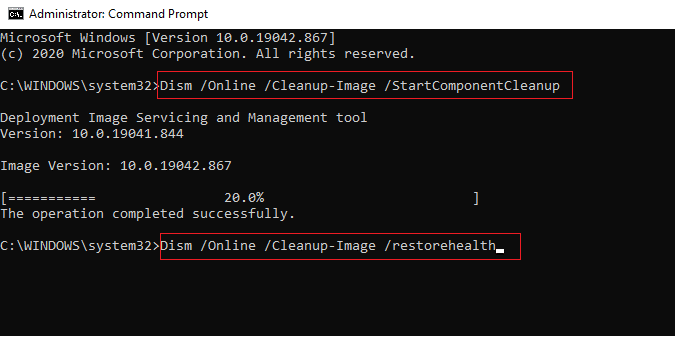
Once the scanning process is complete, check if you can install the latest updates.
1B. Temporarily disable your antivirus (if applicable)
An antivirus package can sometimes prevent any of the latest updates from being installed on your computer. Many Windows users identify many compatibility issues that are difficult to fix. Antivirus software like Norton and Avast can interfere with any latest Windows update, and you are advised to temporarily disable any built-in or third-party antivirus software to fix this issue. Read our guide on how to temporarily disable your antivirus in Windows 10 and follow the instructions to temporarily disable your antivirus program on your PC.
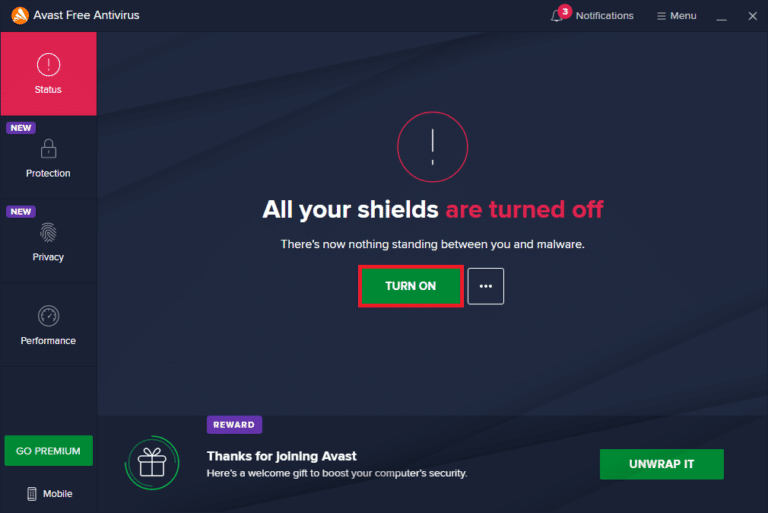
After fixing error 0x800f0831 on a Windows 10 PC, be sure to re-enable your antivirus program as a system without a security pack is always a threat.
1C. Use Google DNS
Some users have suggested that changing DNS addresses helped them fix error 0x800f0831 on Windows 10 computers. Google DNS has IP addresses 8.8.8.8 and 8.8.4.4 which are simple and easy to remember to establish a secure DNS connection between client and server.
Here is our simple guide on how to change DNS settings in Windows 10 to help you change DNS addresses on your computer. You can also switch to any Open DNS or Google DNS on your Windows 10 computer by following our guide on how to switch to OpenDNS or Google DNS on Windows. Follow the instructions and check if you can install cumulative updates on your computer.
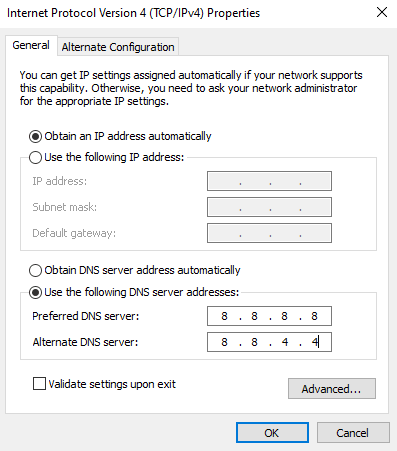
1D. Disable proxy server
Sometimes, with an inappropriate network configuration on your Windows 10 PC, you encounter error 0x800f0831 Windows 10 20h2. If you have installed any VPN service or use proxy servers on your PC, please read How to disable VPN and proxy server in Windows 10 and follow the steps in the article.

After disabling the VPN client and proxy servers, check if you have fixed the error in question. However, if you are facing the same problem, try connecting to a mobile hotspot.
1E. Update BIOS
Several Windows 10 users around the world have reported that error 0x800f0831 is gone after updating the BIOS. But in case you have the latest BIOS version installed and the same error still occurs, you need to reinstall the BIOS. If all of the above methods fail to solve your problem, it is recommended to update your BIOS as outlined in our guide What is a BIOS and how do I update a BIOS?
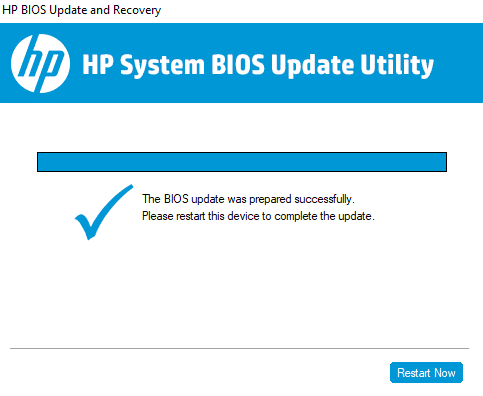
After updating the BIOS, you will have the Windows 10 update error 0x800f0831 fixed.
Method 2: disable external devices
When you encounter update error 0x800f0831 21h1 on your Windows 10 computer, check if you have any external peripherals or USB devices connected. If so, you are advised to remove them to avoid electromagnetic interference contributing to the error. Follow the instructions.
1. First, disconnect all external USB devices connected to your computer.

2. Next, disconnect your webcam, printer, and other peripherals, and leave the most essential devices connected.
Check if you fixed error 0x800f0831.
Method 3: Set the correct date and time settings
Incorrect date and time settings on your computer can contribute to Windows 10 21h1 error 0x800f0831 on your Windows PC. To sync your date, region, and time settings on your Windows 10 PC, follow the instructions below.
1. Press Windows Key + I at the same time to open Windows Settings.
2. Now select the time and language setting.
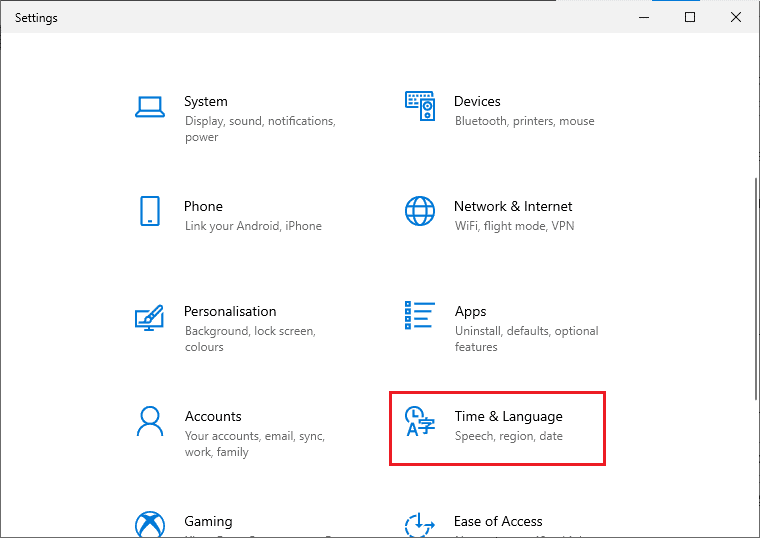
3. Then, on the Date and Time tab, make sure that the two options "Set time automatically" and "Set time zone automatically" are enabled.

4. Then click "Sync now" as above. Check if you were able to get fix 0x800f0831.
Method 4: Run the Windows Update troubleshooter
If your computer has any errors and problems, you cannot update your Windows PC. The built-in Windows troubleshooter helps fix network connection issues, corrupted registry keys, and corrupted Windows components that result in Windows 10 21h1 error 0x800f0831 can also be fixed with this tool. Follow the instructions in our guide How to Run the Windows Update Troubleshooter.
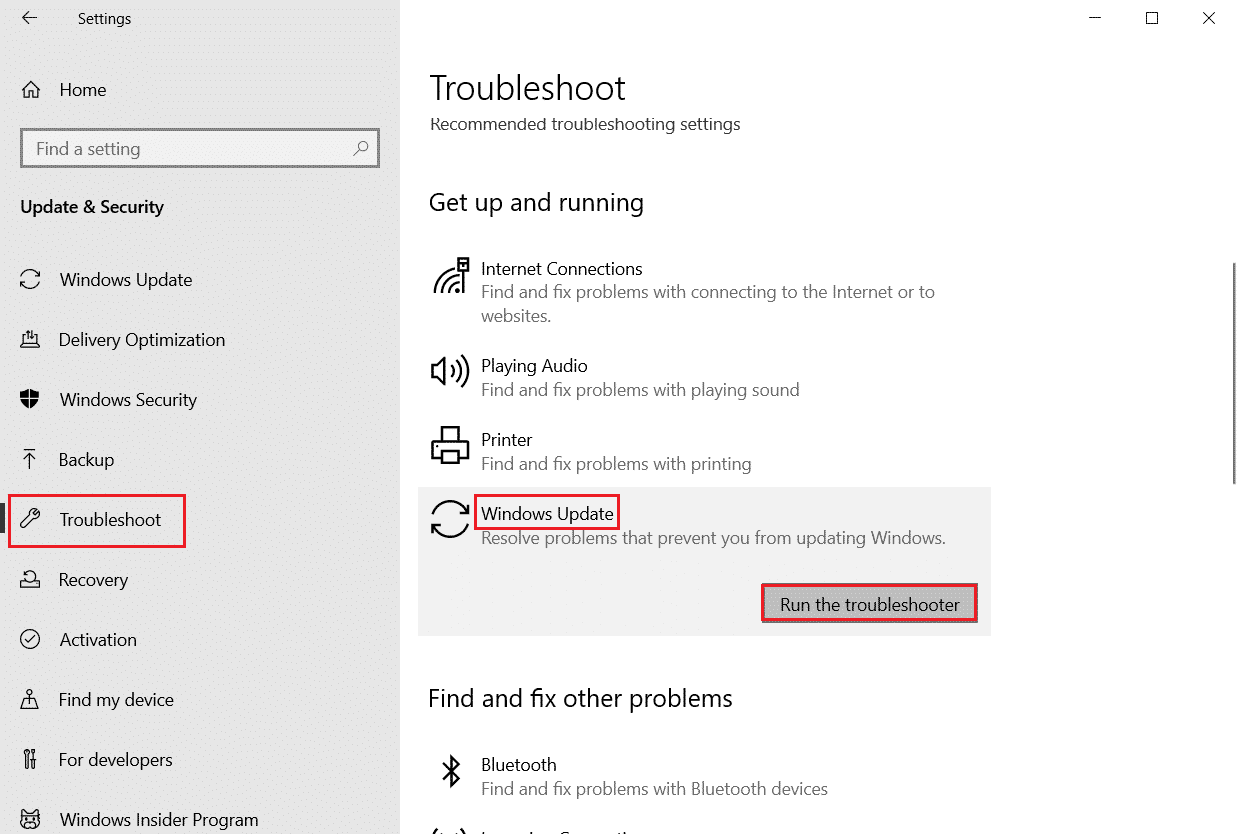
Follow as shown and thus fix the problems identified by the troubleshooter.
Method 5: Reset Windows Update components
An effective way to fix 0x800f0831 Windows 10 21h1 is to reset Windows Update components if no other options worked for you. All Windows update files are stored on your computer, and if they are corrupted or incompatible, you should be facing a number of annoying issues. To fix corrupted Windows Update components on your PC, follow our guide How to reset Windows Update components in Windows 10.
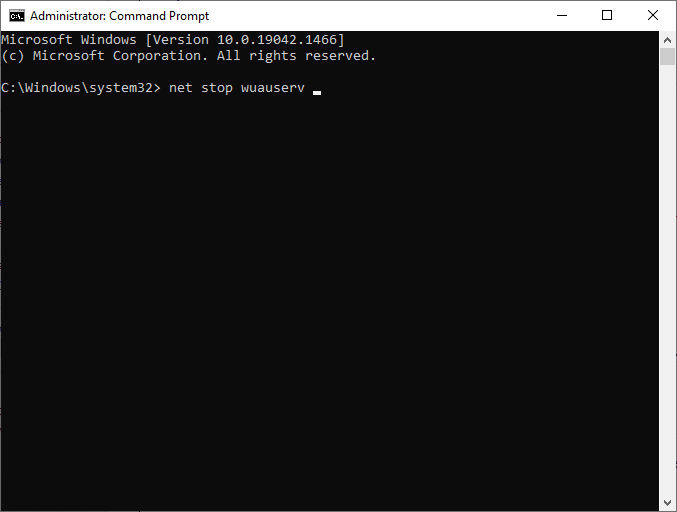
This simple process involves running a set of commands at the command prompt to restart all essential Windows services on your Windows 10 PC. After running all the commands, check if you can install cumulative updates.
Method 6: Restart Essential Windows Services
Some important Windows services, such as Windows Update and Background Intelligent Transfer Services, must be enabled on your computer to avoid error code 0x800f0831 21h1. Background Smart Transfer Services uses available bandwidth to install any latest updates, so your computer only installs any updates if no other installation is in progress. If these services are disabled on your system, you will most likely experience the error in question. Hence, restart the core Windows services as mentioned below.
1. Press the Windows key, type "Services" and click "Run as administrator".
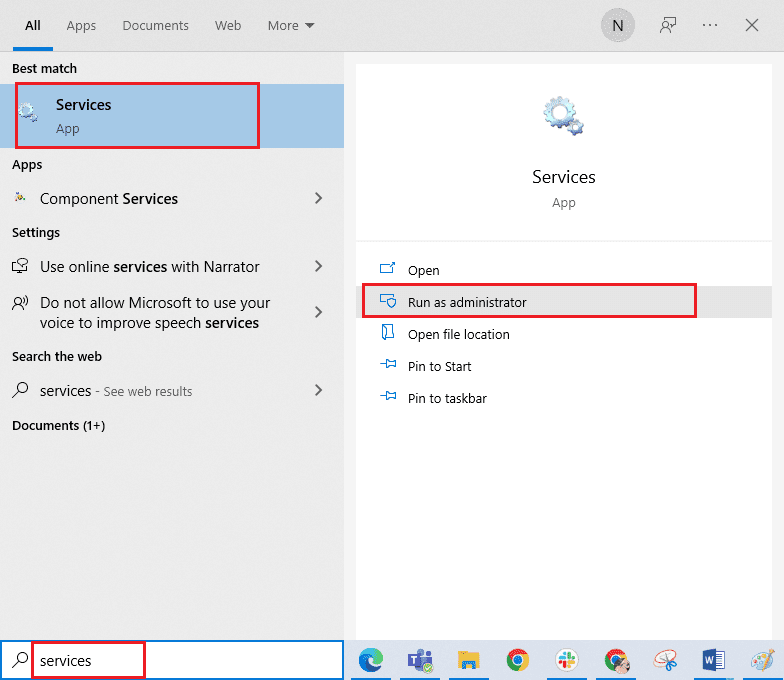
2. Now scroll down and double click Background Intelligent Transfer Service.
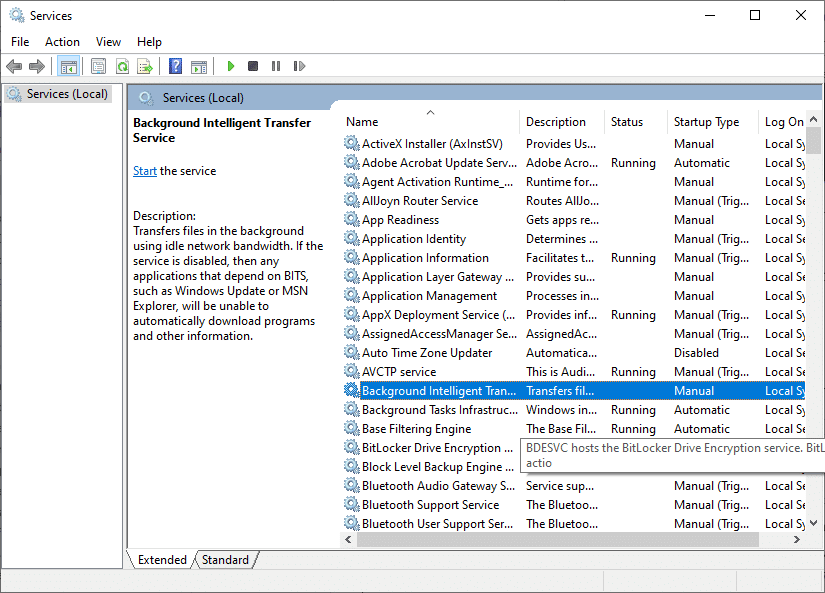
3. Now set the Startup Type to Automatic as shown in the figure.
Note. If the status of the service is "Stopped", click the "Start" button. If the status of the service is "Running", click "Stop" and "Start" again.

4. Click Apply > OK to save your changes. See if you can get fix 0x800f0831 21h1.
5. Repeat all these steps for other Windows Services such as Cryptographic, MSI Installer and Windows Update Services.
Method 7: Delete Software Distribution Folder
If you have verified that Windows Update services are running but are still experiencing update errors in Windows 10, there is another easy workaround to fix update issues. First, stop the Windows Update service and delete the Software Distribution folder in File Explorer. Then start the Windows Update services again. Follow the instructions below.
1. Run the "Services" window as an administrator, as in method 4.
2. Now scroll down the screen and right click Windows Update.
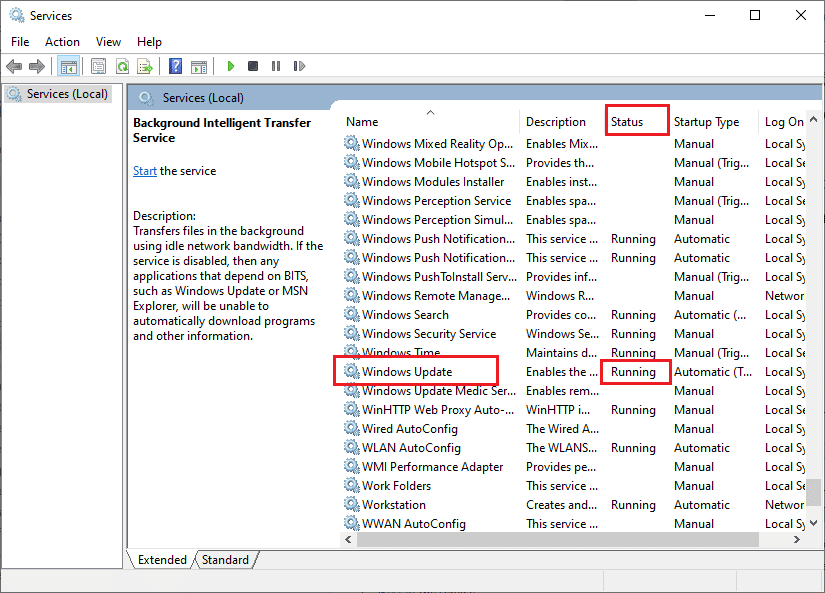
3A. If the status is not set to Running, go to step 5.
3B. If the status is "Running", click "Stop" as shown in the figure.
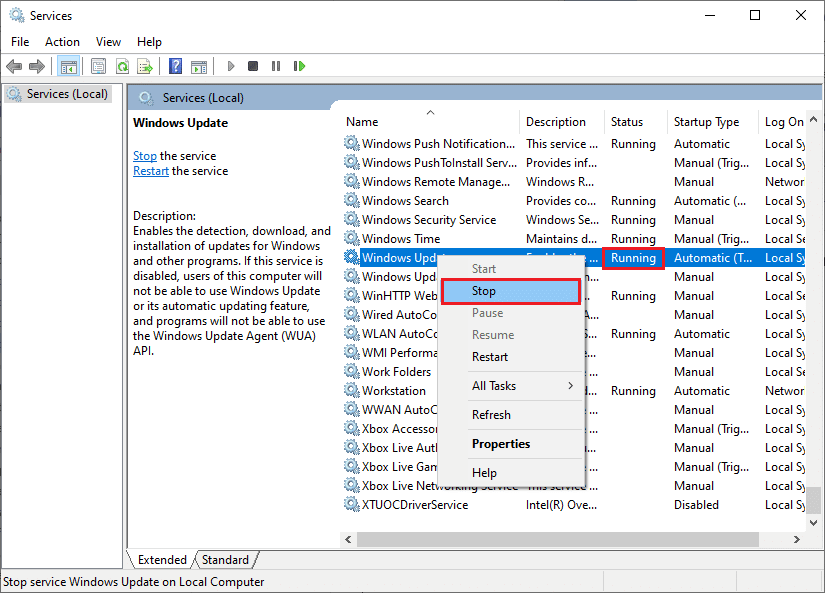
4. Wait 2-3 seconds at the prompt screen, Windows is trying to stop the following service on the local computer…
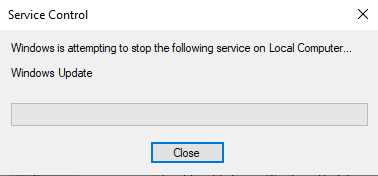
5. Now open File Explorer by pressing the Windows + E keys at the same time. Now go to the following path.
C:WindowsSoftwareDistributionDataStore
6. Now select and right click on all files and folders and click "Delete".
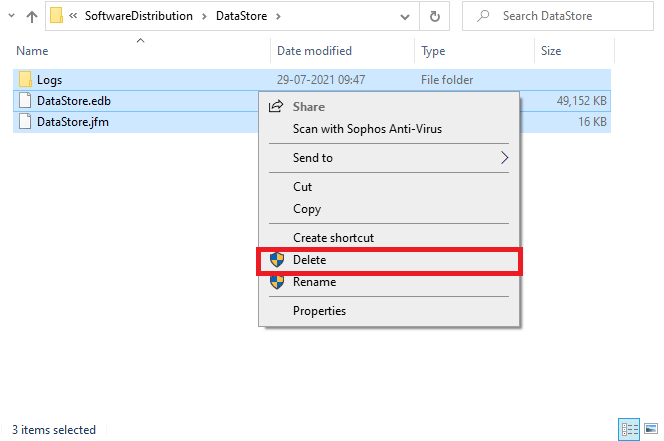
7. Follow the path in the same way and delete all files and folders.
C:WindowsSoftwareDistributionDownload
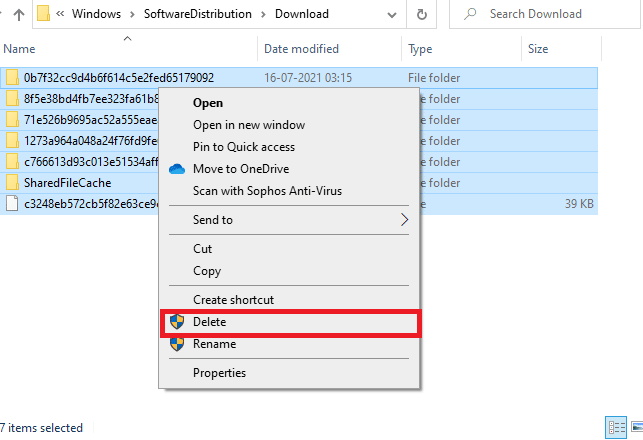
8. Switch back to the Services window, right-click on Windows Update and select the Start option.
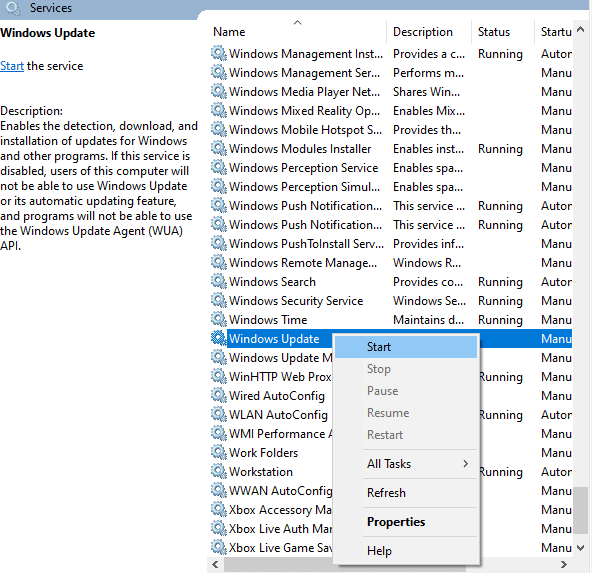
9. Wait 3 to 5 seconds at the prompt, Windows is trying to start the following service on the local computer…
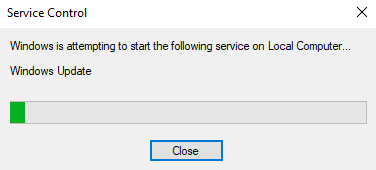
Finally, you have restarted the Windows Update services, thereby deleting the contents of the Software Distribution folder. See if you can fix error 0x800f0831.
Method 8: Uninstall the latest updates
Any previous incompatible updates on your Windows 10 PC may prevent you from downloading new updates to it. Hence, you are advised to uninstall the latest updates that are installed on your PC prior to fix 0x800f0831. This is very easy to do and the steps are shown as follows.
1. Press the Windows key and type "Control Panel", then click "Open".
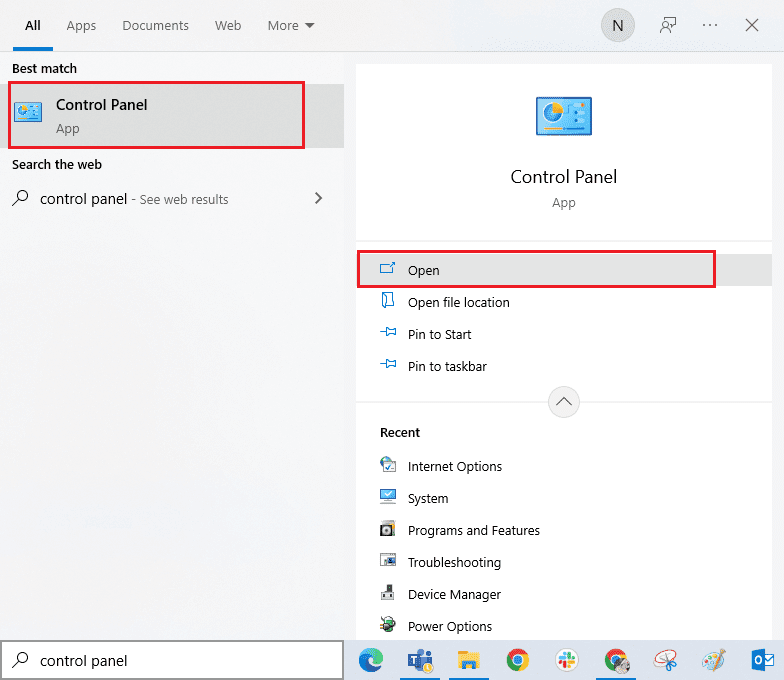
2. Set "View by > Category", then click "Uninstall a program" in the "Programs" menu, as shown in the figure.

3. Now click "View Installed Updates" on the left pane as shown.
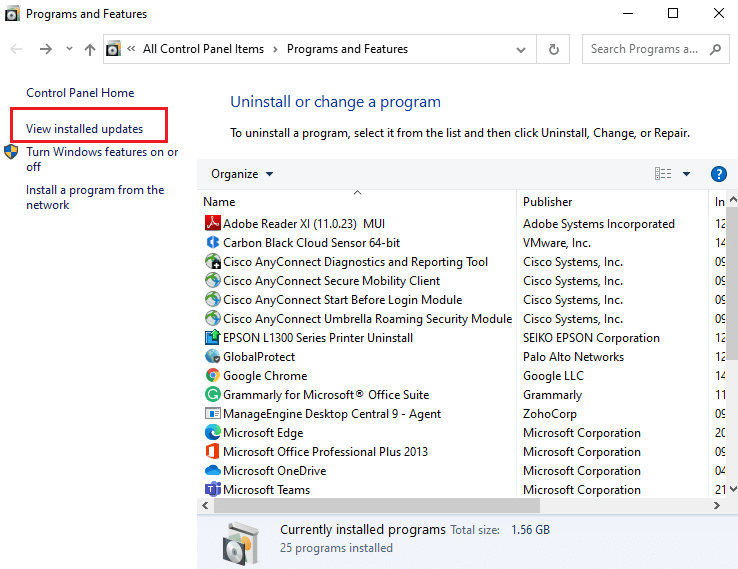
4. Then find and select the most recent update by entering the "Installed on day" date and clicking "Uninstall" as shown below.
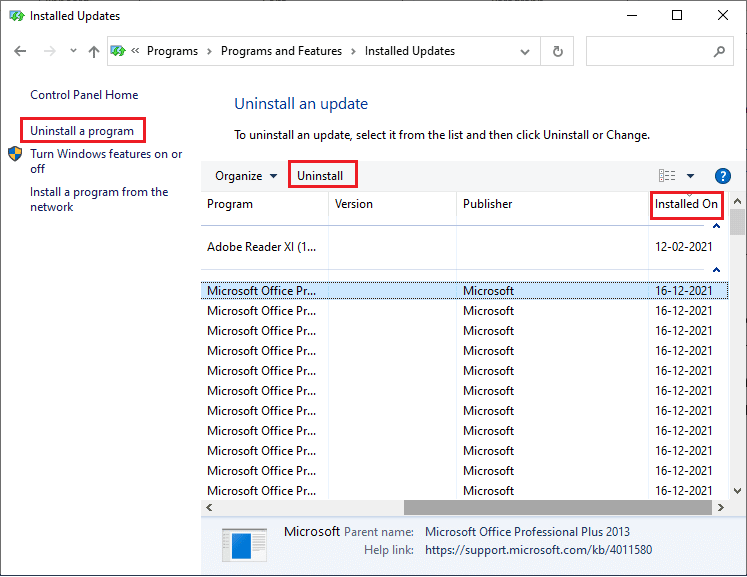
5. Finally, confirm any prompt and restart your computer.
See if you can fix the update error in question in Windows 10.
Method 9: Extend the system partition
If there is not enough space on the system partition, you won't be able to install new updates on your Windows 10 PC. There are several other ways to increase your computer's memory, but they may not always work for you. You must extend the system reserved partition to fix error 0x800f0831 Windows 10 20h2. Although there are many third-party tools to expand the reserved system partition, we prefer to do it manually by following our guide "How to expand the system drive partition (C:)" in Windows 10.
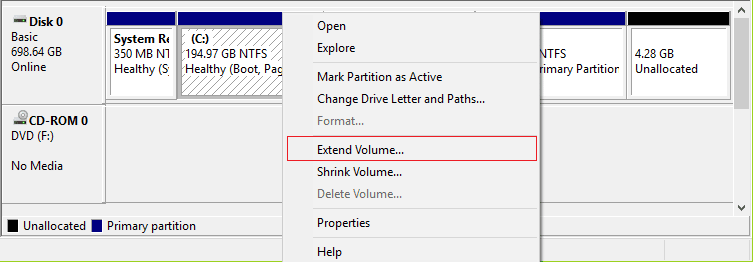
After you have extended the system partition, check if you have fixed the problem.
Method 10: Clean Up Storage Space
If your computer does not have enough disk space to install any new applications from the Microsoft Store, you will encounter the error code discussed. Therefore, check your disk space first and clean up temporary files if necessary.
Step I: Check Disk Space
To check the disk space on a Windows 10 PC, follow these steps.
1. Press the Windows + E keys at the same time to open File Explorer.
2. Now click "This PC" on the left screen.
3. Check the free disk space in the "Devices and Drivers" section, as shown in the figure. If they are highlighted in red, consider cleaning up temporary files.
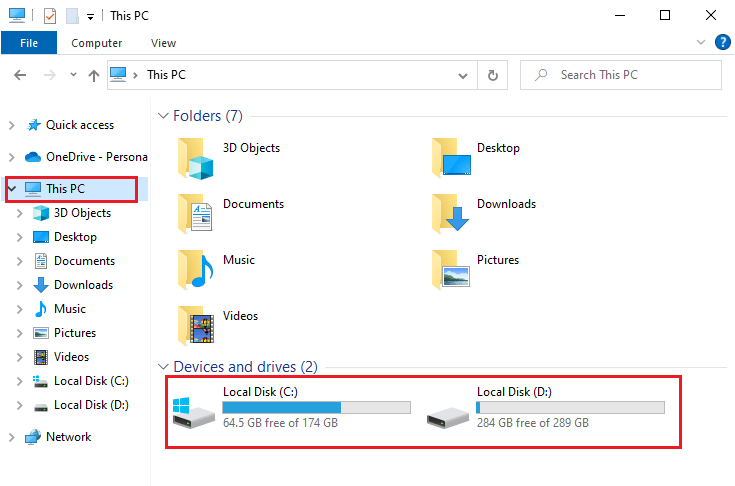
Step II: Clean up temporary files
If your computer has minimal available space contributing to update error 0x800f0831, follow our 10 Ways to Free Up Hard Drive Space in Windows guide to help you clean up all the junk files on your computer.
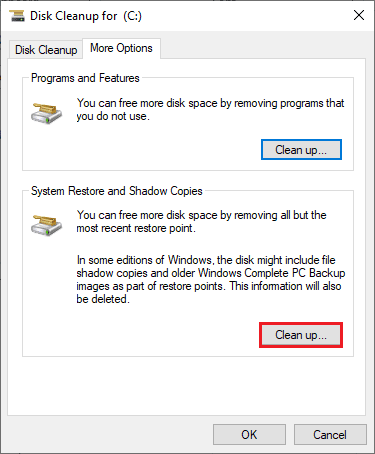
Finally, if you can get fix 0x800f0831.
Method 11: Install updates manually
If all the other solutions in this guide don't work for you, you can still manually download the required update. The Windows 10 Update History web page contains the entire history of updates that have been released for your Windows PC. Follow the instructions below to force updates to be installed.
1. Press the Windows + I keys at the same time to open the settings on your system.
2. Now click on Update & Security.

3. Now select the View Update History option as shown below.
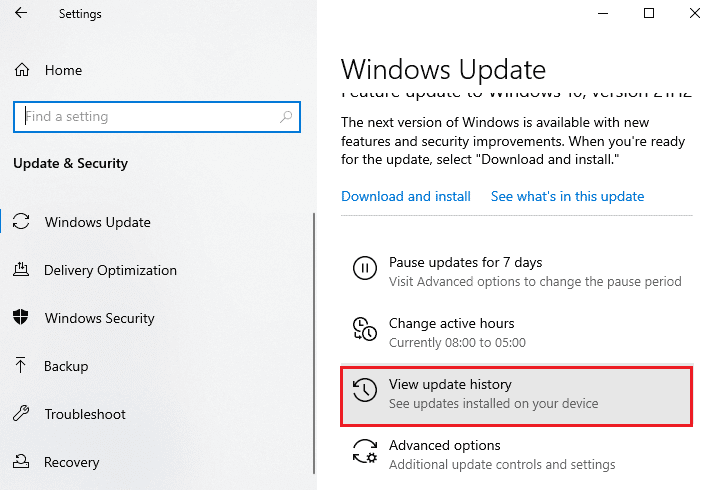
4. In the list, verify that the KB number is pending download due to conflicting errors.
5. Here, enter the KB number in the Microsoft Update Catalog field in the search bar.
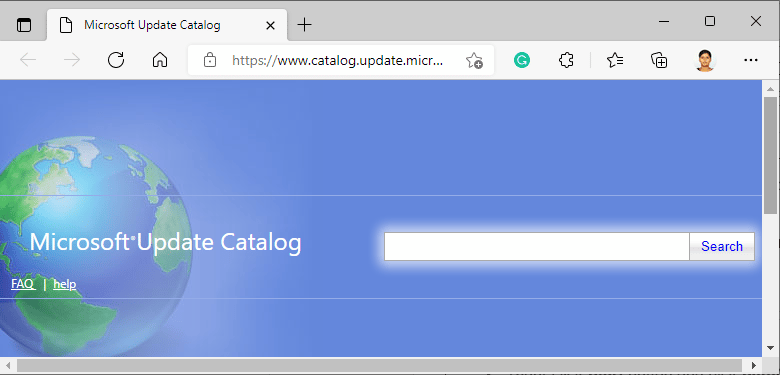
6. Finally, click "Download" according to your latest update and follow the on-screen instructions to complete the process.

Method 12: Update via Media Creation Tool
If you are unable to install the update manually, you can try installing it using the Media Creation Tool. This is the official download platform recommended by Microsoft to fix any update errors on your Windows 10 PC. Follow the steps below to do the same.
1. Open any browser and launch the official media creation tool download page.
2. Now click on the "Download tool now" button under "Create Windows 10 installation media". 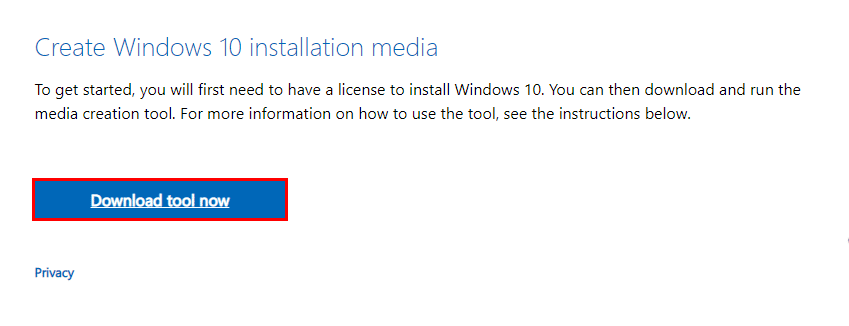
3. Run the setup file and click "Yes" in the User Account Control (UAC) window, if available.
4. Now click the "Accept" button on the Windows 10 setup window as shown in the picture.
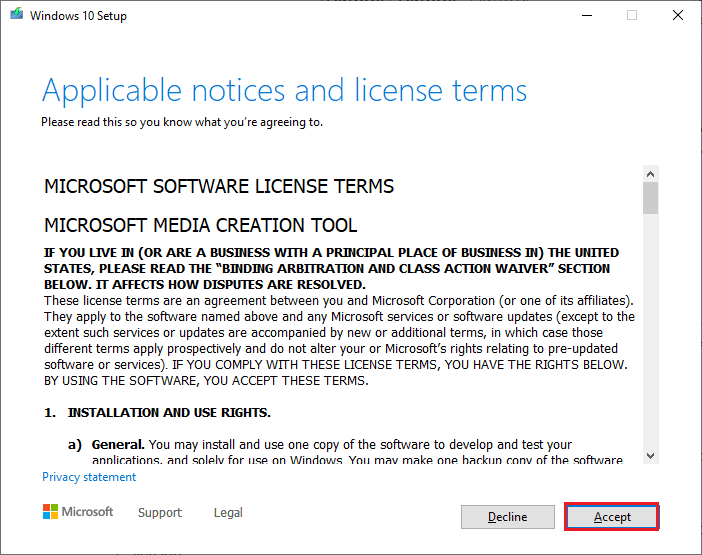
5. Wait for the scanning process to complete and select the "Upgrade this PC now" option, and then click the "Next" button.

6. Wait for the Windows ISO image to download to your computer and click Accept.
Note. You need to wait until all pending updates on your computer are installed on your computer so that Media Creation Tool can update your operating system to the most recent version.
7. Finally, click "Install" to complete the process.
Method 13: Tweak the Windows Registry
Next, it is advised to clear the Windows Registry Path corresponding to the Windows Update Download Path in order to fix the error code in question. You should always be careful when handling the Windows Registry, otherwise you may lose your files. Follow the steps below to tweak the registry keys, thereby fixing the error in question.
1. Go to the search menu and type Registry Editor. Then click "Run as administrator".
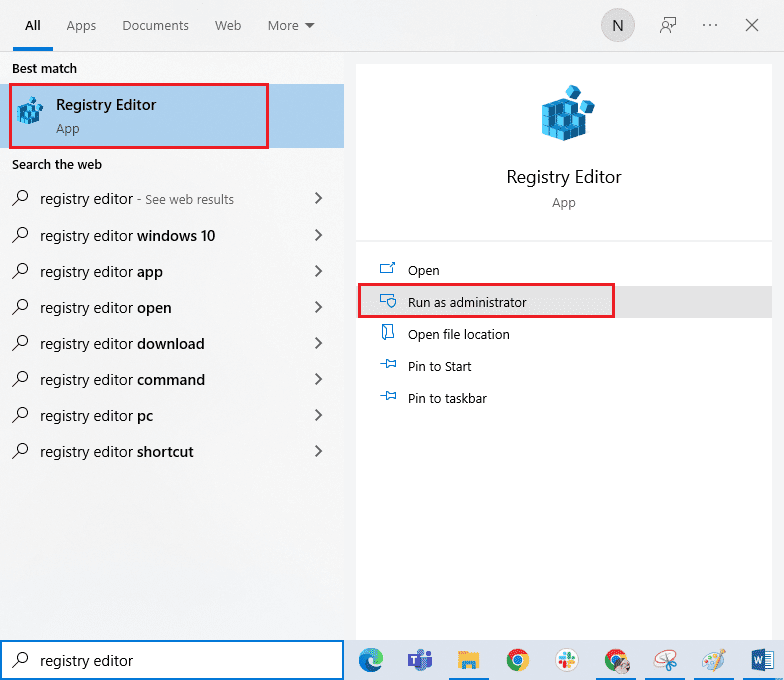
2. Now go to the following path in the registry editor.
HKEY_LOCAL_MACHINESOFTWAREPoliciesMicrosoftWindowsWindowsUpdate
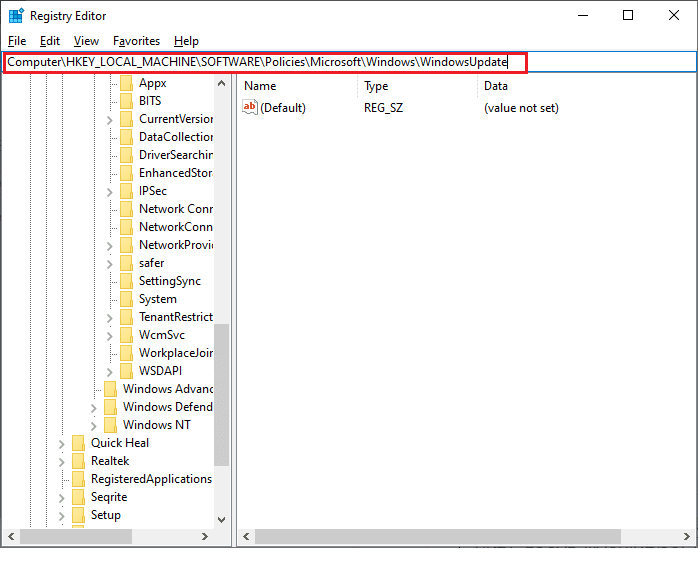
3. In the right pane, find WUServer and WIStatusServer.
3A. If you can't find them, you can't delete the Windows Update download path. Proceed to the next troubleshooting method.
3B. If you can find the entries, right-click them and click Delete.

4. Finally, restart your computer and check if you have installed hotfix 0x800f0831 21h1.
Method 14: Perform a System Restore
If you are not satisfied with any of these methods, the only option left is to restore the previous version of the computer. To do this, follow our guide "How to use System Restore in Windows 10" and follow the instructions as shown. In the end, your computer will be restored to its previous state, in which no errors will occur at all.

After restoring your Windows 10 PC, check if you can get fix 0x800f0831 21h1.
Method 15: Restart your computer
If your PC is dealing with severely corrupted Windows components, an effective way to clean up all those corrupted components and get your data back on is to restore your installed PC, as outlined in our How To Reset Windows 10 Without Losing Data guide. Follow the instructions in this article and at the end you will fix update error 0x800f0831 21h1.
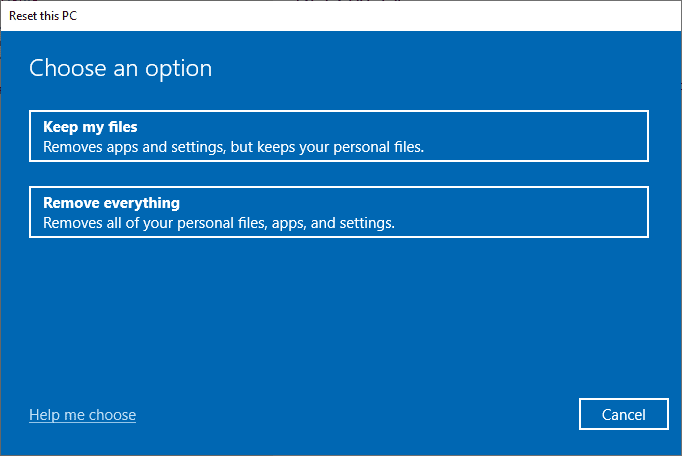
***
We hope the guide was helpful and you were able to get the fix for Windows 10 update error 0x800f0831 21h1. Let us know what you want to know next. Feel free to contact us with your questions and suggestions through the comments section below.